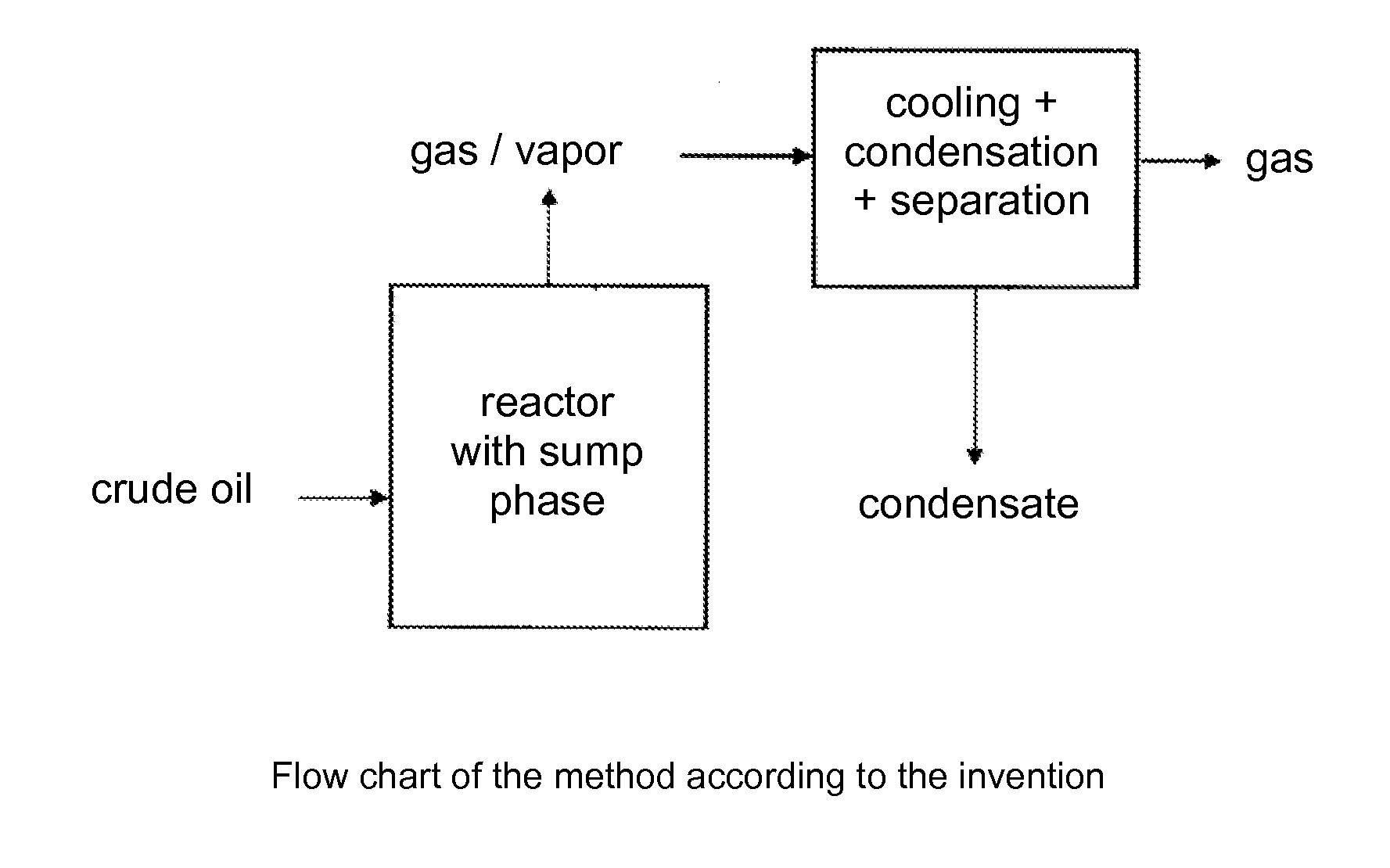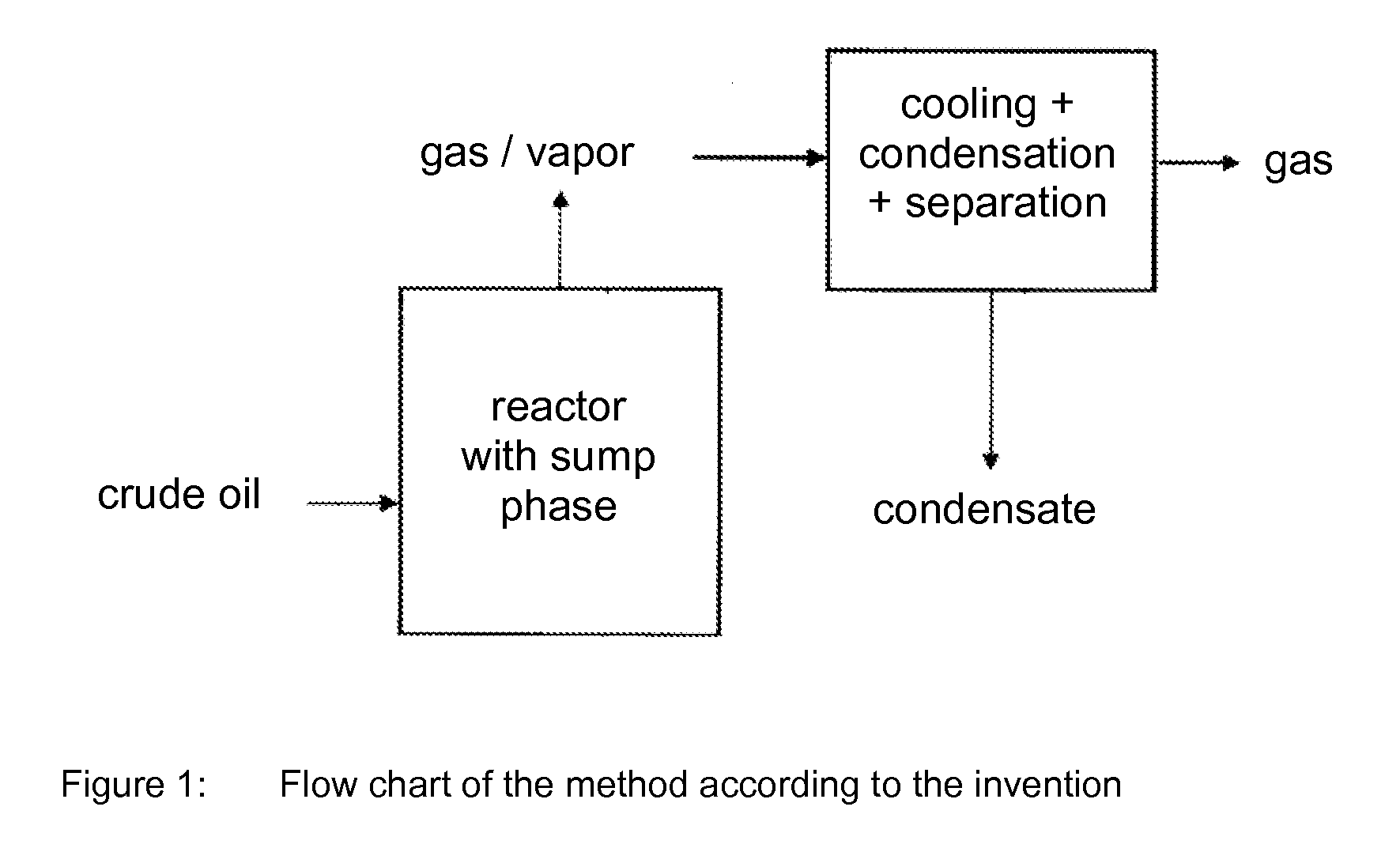Method for thermal conversion of heteroatom-containing crude oils into low-heteroatom light and middle oils containing products produced by this method and the application of such products
- Summary
- Abstract
- Description
- Claims
- Application Information
AI Technical Summary
Benefits of technology
Problems solved by technology
Method used
Image
Examples
examples
[0060]The invention shall be explained closer by means of the following three embodiments in which the method according to the invention is experimentally applied to three different crude oils, under atmospheric pressure respectively
experimental embodiment 1
Refined Rapeseed Oil
[0061]In experimental embodiment 1 refined rapeseed oil is used as crude oil. First, 8 kg of this crude oil are provided as a starter sump phase in a laboratory reactor and are heated up to a reaction temperature of 370° C. After reaching the reaction temperature the continuous supply of 1 kg / h crude oil starts. Because of the conversion reactions in the sump phase the product oil in the light and middle oil range, water and a combustible gas are generated. The product oil and the water evaporate in the reactor and together with the generated gas they are continuously conducted out of the superior part of the reactor via the gas / vapor phase. This gas / vapor phase is led over two cooling stages. The first stage is held at 250° C. and the second at 20° C. In the first stage a portion of the vapor phase condensates and the generated condensate, consisting of an oil in the upper middle oil range, is separated and completely and continuously reverted into the reactor. ...
experimental embodiment 2
Used Fat
[0067]In experimental embodiment 2 old fat is used. The old fat comes mainly from the gastronomy sector. It is only roughly mechanically purified through filtration and then used as crude oil in the method according to the invention. First, 8 kg of this crude oil are provided as a starter sump phase in a laboratory reactor and are heated up to a reaction temperature of 365° C. After reaching the reaction temperature the continuous supply of 1 kg / h crude oil starts. Because of the conversion reactions in the sump phase the product oil in the light and middle oil range, water and a combustible gas are generated. The product oil and the water evaporate in the reactor and together with the generated gas they are continuously conducted out of the superior part of the reactor via the gas / vapor phase. This gas / vapor phase is led over two cooling stages. The first stage is held at 250° C. and the second at 20° C. In the first stage a portion of the vapor phase condensates and the ge...
PUM
| Property | Measurement | Unit |
|---|---|---|
| Temperature | aaaaa | aaaaa |
| Temperature | aaaaa | aaaaa |
| Temperature | aaaaa | aaaaa |
Abstract
Description
Claims
Application Information
 Login to View More
Login to View More - R&D
- Intellectual Property
- Life Sciences
- Materials
- Tech Scout
- Unparalleled Data Quality
- Higher Quality Content
- 60% Fewer Hallucinations
Browse by: Latest US Patents, China's latest patents, Technical Efficacy Thesaurus, Application Domain, Technology Topic, Popular Technical Reports.
© 2025 PatSnap. All rights reserved.Legal|Privacy policy|Modern Slavery Act Transparency Statement|Sitemap|About US| Contact US: help@patsnap.com



